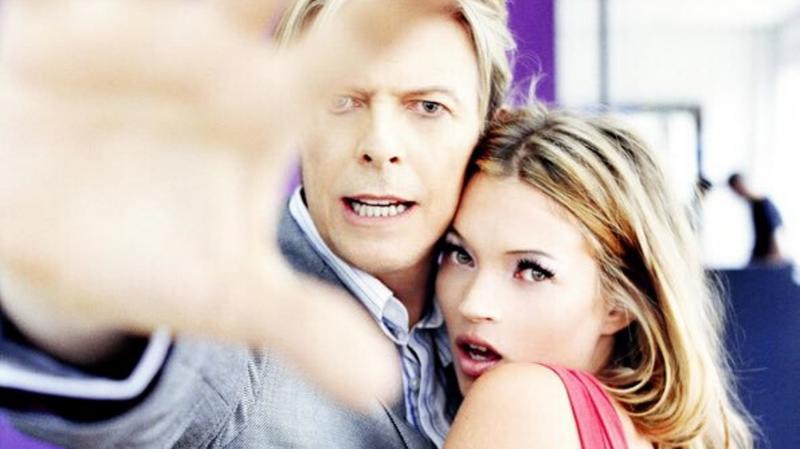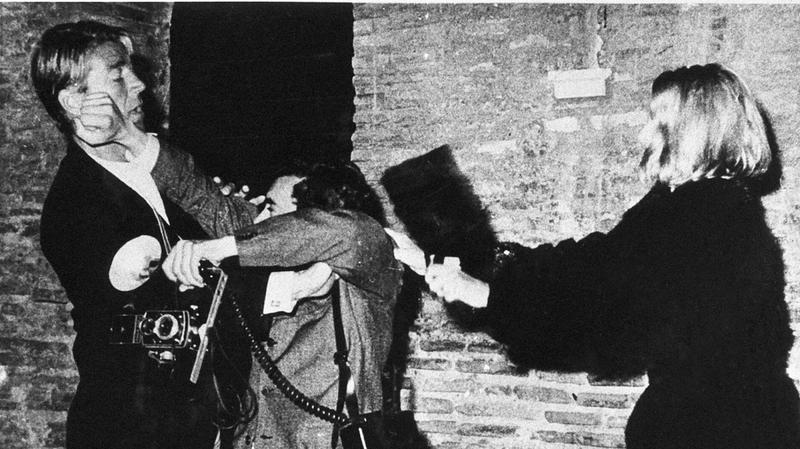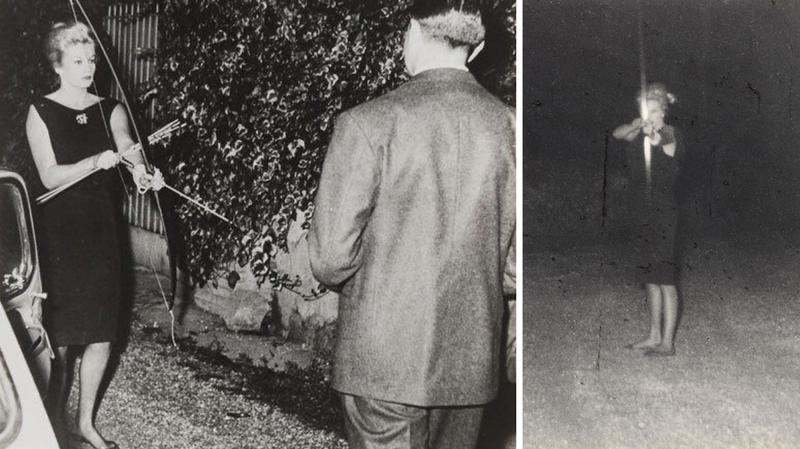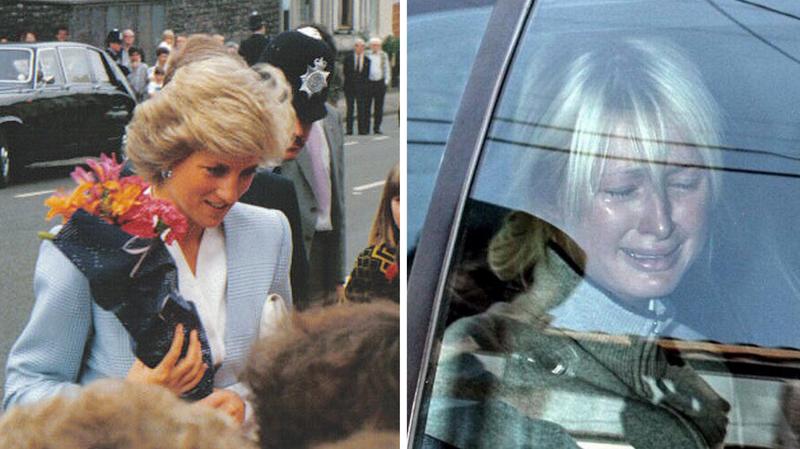Of Shutterbugs & Mosquitoes: A Brief History of the Paparazzi

There’s no denying it: Our society is celebrity obsessed. These days, those who are curious about the rich and famous — or the not-so-rich and famous — don’t have to rely on gossip mags and tabloids as the sole sources of shocking tidbits and sneaky photographs. Just check your fave’s latest Insta story or tweet for the juicy details.
When the public’s interest in celebrity culture and Hollywood swelled in the ’50s and ’60s, fans wanted access to those famous faces — to peek behind the curtain into celebrities’ private lives. There’s something intriguing about the way a public figure’s life is so curated, and when it intersects with the mundane, it’s exciting to feel as though we are all one and the same.
Enter the paparazzi. Before social media, video sharing on the Internet and 24/7 entertainment news stations, these photographers were the key to accessing celebrity life — particularly the everyday minutia (getting a peppermint mocha, shopping at Target, walking literally anywhere) that made them seem so human. Nowadays, the paparazzi — independent photographers who snap photos of high-profile folks — are seen as a nuisance and, in the very worst cases, threatening. But how did this profession come to be?
Hatching Out of La Dolce Vita: The Origins of a Nuisance
Not affiliated with mainstream media organizations, paparazzi capture shots of celebrity sightings. Through their photos, these opportunists make stars accessible — even ordinary. While the name “paparazzi” may seem a bit random, it actually has its origins in the Federico Fellini film La Dolce Vita (1960), where Walter Santesso plays a news photographer named Paparazzo. In an interview with Time, Fellini noted that “Paparazzo… suggests to me a buzzing insect, hovering, darting, stinging.” In short, a bit like a mosquito — nature’s nuisance.

While this origin story for the word is sometimes disputed by film historians, it’s clear that by the 1960s, the term paparazzi had entered the English lexicon as a way to describe Hollywood’s intrusive shutterbugs. Other languages that don’t use the Latin alphabet — including Japanese, Russian and Hebrew — have adopted the Italian term. In Chinese, the characters used to represent the paparazzi mean, roughly, “puppy squad” — which is way more endearing than a horde of mosquitoes.
The paparazzi on the whole are considered to be invasive by nature, and Italian photographer Rino Barillari had a huge part in shaping this perception. In 1963, actor and bodybuilder Mickey Hargitay got so fed up with Barillari’s intrusiveness that he assaulted the so-called “King of Paparazzi” on the street (see above).
A Not-So-Sweet Life for High-Profile Photo Subjects
Famously, actress Anita Ekberg also had enough of the paparazzi loitering outside her home and took to the streets with a bow and arrow (pictured). While brawls like Hargitay’s and threats such as Ekberg’s may seem a bit rash at first glance, there’s no denying that paparazzi photographers exhibit intrusive, stalker-like behavior. Not everyone has the patience of Audrey Hepburn, who often simply ignored the picture-takers.

In 1972, Galella v. Onassis became a landmark case for its impact on photojournalism. The instigating event? Former First Lady Jacqueline Kennedy Onassis ordered her Secret Service agents to destroy paparazzo Ron Galella’s camera and film after he harassed her in New York City’s Central Park. Galella sued; Jackie O. counter-sued. In the end, the former First Lady obtained a restraining order to protect herself and her children.
Since that case, several states in the United States have implemented laws and curfews to mitigate the threat the paparazzi pose to celebrities’ private lives. In 2013, California lawmakers passed a bill to protect the children of celebrities to curb harassing behavior.
In the U.S. and elsewhere, anti-stalking bills — and even a few restraining orders — have helped curb aggressive intrusion and allowed celeb’s some measure of personal space. All of this, of course, occurred in the wake of the most tragic and infamous paparazzi-related incident. In 1997, Diana, Princess of Wales, and Dodi Fayed were killed in a car crash. Their driver was speeding to escape a horde of paparazzi. Although it was later determined that alcohol impairment may have been another cause of the crash, several paparazzi photographers were taken into custody and later released.
Paparazzi in the Age of Social Media
In the early 2000s, Photoshop became gossip mags’ new get, but these publications — and new online entertainment platforms — still needed fresh celeb snapshots to entice readers. Once a highly sought photo was taken, you could bet it would be everywhere, flooding the internet. For example, Mel Bouzad, one of the top paparazzi in Los Angeles in the early to mid-2000s, claimed that a picture of Jennifer Lopez and Ben Affleck (#Bennifer) in Georgia in the wake of the duo’s high-profile breakup nabbed him a whopping $150,000.

Recently, there’s been an uptick in discussion surrounding stars’ right to bemoan the paparazzi. The argument? Said stars are public figures, so visibility comes with the gig. Sure, celebrities need exposure — and some have been able to manipulate paparazzi behavior to suit their needs — but there’s no doubt it’s still a meddlesome business. (Besides, it’s always great when a fave stands up to the snoops. Looking at you, Anne Hathaway.)
In 2016, model and actress Cara Delevingne tweeted that aggressive paparazzi — who can now track celeb’s thanks to social media posts — had treated her like a “zoo animal.” The same fans who (seemingly) crave celeb photos, backed Delevingne’s right to privacy. Thanks to social media, celebs are more accessible than ever — and many stars choose to share themselves with us. A curated exposure. Nonetheless, this hasn’t stopped paparazzi — it’s just spawned a new breed of social-media-literate shutterbugs.






